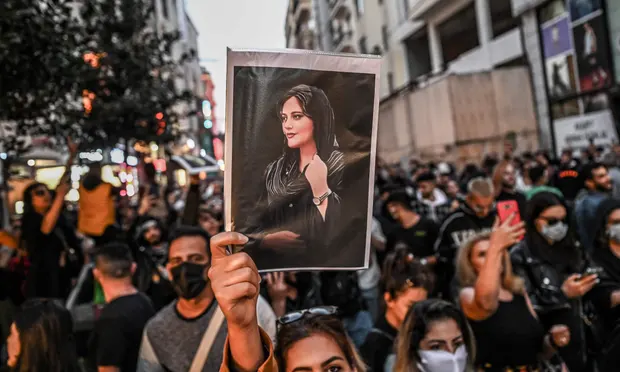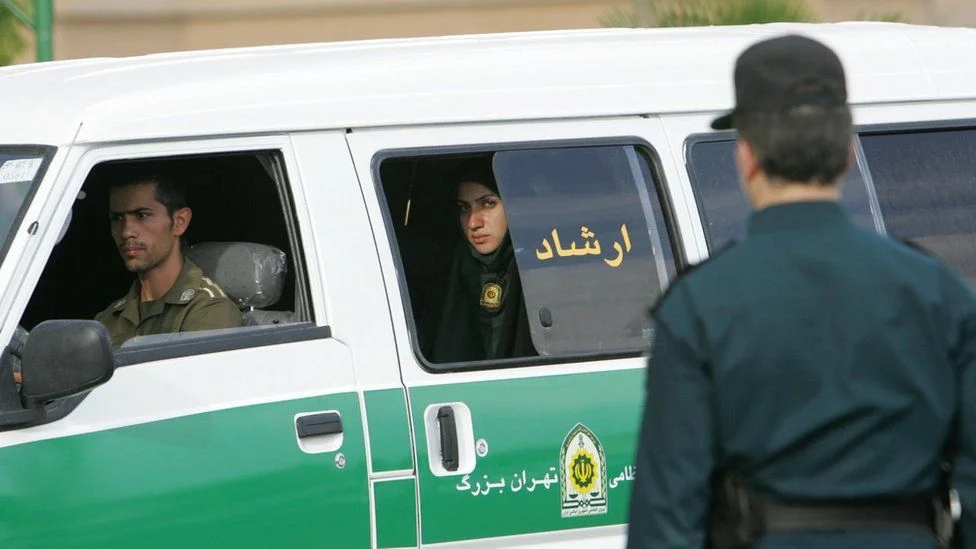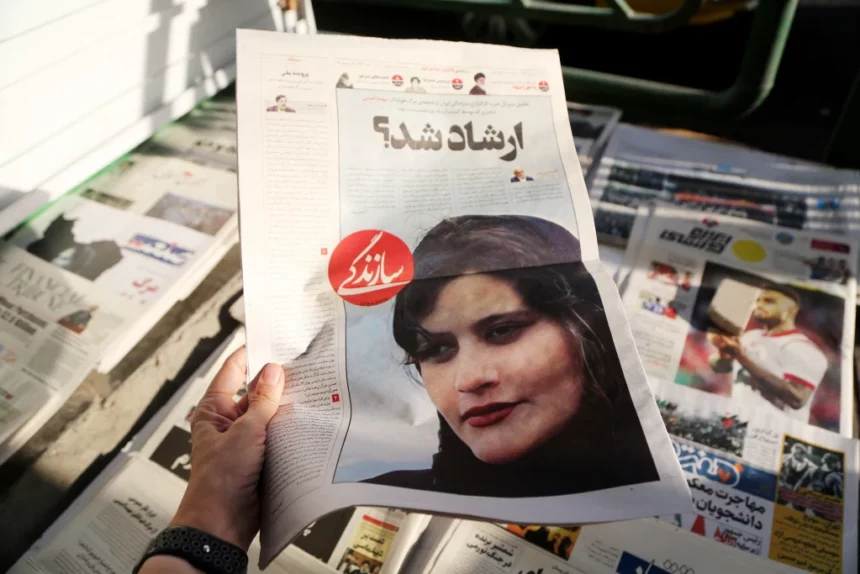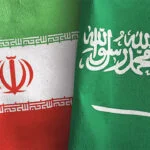From her birthplace of Saqqez in the province of Kurdistan in Iran, Mahsa Amini was traveling to the capital city. She was coerced into a van belonging to the “guidance patrol” or “Gasht e Ershad” on Tuesday afternoon after leaving a metro station in central Tehran. Since 1979, the Islamic Republic has had patrols to enforce women’s dress codes.
The 22-year-old was transferred to the infamous “Vozara detention camp,” where she was to be lectured on her “indecent” look alongside other women judged in breach of the mandated hijab, or head covering. Instead, she died under unknown circumstances. The cops awkwardly manipulated a CCTV film in response to the uproar that ensued. It depicts Amini gently falling to the floor before landing on the back of a chair. She was taken to the hospital and died on Friday without waking up.
Amini’s death has not been adequately explained. But there is little faith that the authorities can be trusted to deliver one, as they looked to be anxious to do as people rushed to the streets in wrath throughout Tehran and at her funeral in Saqqez, where demonstrators were dispersed with teargas and force, as is a tale of the past. The country is familiar by the aftermath of the various incidents that have taken the lives of hundreds of Iranians in recent decades, including innocent people, journalists, and political activists whose killings or disappearances remain unexplained with no accountability from those authorities.

Photograph: Ozan Köse/AFP
According to several witnesses, Amini may have had a heart attack while being held in custody. Others, who are aware of the violent manhandling of morality police, mention the impact or force used in the van. Her family defied the government’s claim that Amini had “pre-existing ailments” that contributed to a stroke. She was declared brain-dead upon arrival, according to a deleted Instagram post from Kasra hospital.
The details of her murder may be incidental, though, compared to a more important point: another irreparable loss serves as yet another illustration of the Iranian regime’s persistent contempt for the safety, security, and general well-being of its people, particularly its youth.
Time and over, the Islamic Republic’s opaque investigations, muddled explanations, and unrelenting denials of wrongdoing have wiped away every shred of trust among its 83 million residents, who go through life in a constant state of moral disappointment, religious indifference, and financial misery. A comprehensive inquiry of Amini’s killing is to be undertaken by the Interior Minister, per instructions from Iranian President Ebrahim Raisi. But over the past few months, Raisi’s government has demanded more monitoring from the morality police.
In Iran, people have been inwardly familiarized to the fear of so-called “Fati (short for Fatimah) Commandos,” a post-revolutionary moniker that generations of Iranians have used to refer to the female officers of this vile organization. The huge divide between millions of regular Iranian citizens and a persistent minority that is clinging to power through every available means and tactic is reflected in their long black veil, crude demeanor, and arrogant tone. To further highlight the hypocrisy of the system and its never-ending schemes to gain money in the name of religion and morality, the government declared in late August that it would impose monetary fines on individuals who violated “hijab laws” in public.
The rest of the world has to be aware that although millions of Iranian women fervently support the hijabs they wear, they abhor the repressive and antiquated practices of the regime that make them necessary. Many Iranian women, in their millions, would gladly part with their scarves if they could. But more people want freedom of choice.

Credits: AFP
The ongoing upheaval in Iran is about more than just sadness or how loosely one wears a scarf; it includes weakened demonstrations in Tehran and persistent instability in Amini’s village. People’s indignation reveals deep-seated tiredness and hatred toward a system that is rife with hypocrisy, corruption, and the medieval treatment of its population.
A few days before Amini passed away, allegations surfaced that the son of Iran’s vice president for women’s and family affairs had established a business to offer virtual private networks (VPN) in Canada. Millions of Iranians have reportedly been using VPNs for a long time to get over the regime’s strict internet censorship measures and online filtering, which have, of course, been refuted by the government.
For the millions of Iranian youngsters who are denied access to the most basic prospects due to blatant internal corruption, poor management, embezzlement, nepotism, and international sanctions, the internet undoubtedly offers at least a virtual “escape.” The children of hundreds of current and former government officials and insiders, however, have fled the nation and are now living comfortably and occasionally gallivanting overseas in the United States, Canada, and the United Kingdom.
People have been forced to adopt required religious views for forty years, which has resulted in a society that, in some aspects, has gone wrong. Prostitution, sex trafficking, drug and alcohol abuse, gambling, and corruption are now extremely common. Today, pimps and prostitutes freely wander the streets and restaurants of a nation where the moral police uproot people’s lives regularly. It’s not just about wearing a headscarf in this situation. Iranian women and girls have been discouraged from wearing headscarves to spur reform, but these efforts have failed and frequently resulted in greater crackdowns by an already intolerable regime.
Finding ways to pursue policies that help distinguish between the nation’s common citizens and the governing establishment, as well as supporting cultural and commercial engagements with the country’s vibrant youth — the nation’s most valuable resource — and helping them find ways to connect with the rest of the world to grow, to thrive, and to build the civil and political tools they need to one day soon break free, are effective ways to undermine this oppressive apparatus.












